FORUM
Read about why students should have a seat at the table in gun regulation discussions
PAGE 5
FEATURES
Seniors Shina Eron, Oren Kim and JJ Racz pursue passions in skateboard community
PAGE 10



Read about why students should have a seat at the table in gun regulation discussions
PAGE 5
Seniors Shina Eron, Oren Kim and JJ Racz pursue passions in skateboard community
PAGE 10


Yael Gottesman Lifestyle editor
On Tuesday, Nov. 5, five candidates will run in an election for PAUSD’s Board of Education. The board consists of five members elected by Palo Alto residents to serve four-year terms. Elections are held on even-numbered years and designed to be staggered to ensure that two to three seats are open at each election. This year, three positions will become available as the terms of Board President Jesse Ladomirak and Board Members Todd Collins and Jennifer DiBrienza expire — Board Members Shana Segal and Shounak Dharap will remain on board until 2026.
Chiu
As the parent of four children in PAUSD, Rowena Chiu is running for a seat on the school board with a mission that, “every child must grow.” Previously serving as JLS Connections Board President and Parent Teacher Association president at Ohlone Elementary, Chiu is determined to reflect the needs of the communities that PAUSD represents. She has worked and volunteered in Palo Alto classrooms since 2009 and has taught disadvantaged youth across Africa, Asia, and inner-city London, where she taught filmmaking to high school dropouts at a media center.
“The idea that you would bring diverse voices around the table … (and) actually genuinely try and weave in the concerns of people who are in many different places about an issue and try to find a solution that is best for the greatest good,” she said. “I also think something very basic has been lacking in terms of our consensus building (is) any basic negotiation and bargaining, you come to the table, but you’re not going to walk away from the table with everything you want.”
Chiu aims to prioritize communication, education, and evidence-based problem-solving to enhance safety for students and teachers. Beyond academic achievement, Chiu prioritizes mental health support, believing that clear mental health is extremely complex and deep rooted because it stems from an individual’s background and experiences.
“We need to equip high school teachers with much more training about identifying depression and mental health at an earlier stage, before suicide, and all sorts of stuff,” she said. “(Depression) is not a person going around openly crying. It could be a person who’s very quiet. It could be a person who’s acting out in anger. It could be a person who’s deeply anxious, and worried.”
Chiu began her journey in local politics by advocating for the needs of the Special Education community, with a drive to de-stigmatize SpEd and ensuring that students and teachers receive and promote transparency in budget decisions.
As the election approaches, Chiu is focused on creating a small divide of transparency and inclusivity within the district, advocating for a collaborative approach to decision-making that values all voices.
“I would love to look at whether or not we can celebrate diversity, not everybody is going to be good at math and stem, so a broader approach to what one can thrive in would be a healthier approach,” she said.
Following her previous school board candidacy in 2022, Nicole Chiu-Wang continued her education advocacy work for PAUSD through DreamCatchers — a nonprofit that supports socioeconomically disadvantaged middle school students in Palo Alto. Running for school board again, Chiu-Wang wants to focus on equity for all students and emphasizes the importance of community engagement.
Chiu-Wang began advocating for education while tutoring middle school students at an Asian American community group in Fountain Valley. She continued to work in education by helping graduate students design a curriculum that is used by over 2000 students.
“Seeing the opportunity gap firsthand motivated me to take action,” Chiu-Wang said. “With early childhood education, you can see the inequities there. It galvanized me to think about things like, ‘How can I try to close the gap?’”
As a mother of two young children, Chiu-Wang believes it is critical to invest in early childhood education because it creates pathways for later success in high school. She also aims to improve on the highly stigmatized mental health services in schools. To tackle these goals, Chiu-Wang believes that smaller group discussions will give people more opportunities to participate and feel comfortable.
“Whenever we roll something out, we need to think about the intended consequences and the unintended consequences. How do we — because we are a public school district — how do we serve all these students?” she said.
Chiu-Wang has often observed a lack of trust and transparent communication between the district and parents. While she acknowledges that effective communication can be challenging due to the district’s size, she believes that equipping principals with better tools to connect with parents could help address this issue.
“When we improve communication, we can diminish anxiety and foster a stronger community connection,” Chiu-Wang said.
With experience working with students of all ages, Chiu-Wang is advocating for comprehensive solutions that prioritize the well-being and success of every student in the district.
“We have the power to shape the future of our schools, and I want to ensure every voice is heard in that process.”
Software engineer Chris Colohan found inspiration to run for school board elections after five years of involvement in the Parent Teacher Association as treasurer and co-president. For many years, the stay-at-home dad also spent a lot of time with students in classrooms. Colohan substituted for various grade levels across all Palo Alto schools, including Gunn.
“It is crazy to run for the board,” he said. “It is a circus. There’s all sorts of politics around it, but that’s okay because it’s incredibly important, and it really matters. It really has a large impact in the long term on all of our kids, and that’s what I really care about.”

Rowena Chiu
“I’m running on a platform of ‘Every Child Must Grow’, advocating that the district should meet the needs of all of its diverse learners. I also prioritize mental health and special education. Finally, I am calling for greater transparency in the district’s interactions with parents, students and teachers.”
Nicole Chiu-Wang
“(My) campaign is centered on (my) commitment to ensuring that all students thrive, drawing from(my) extensive experience in community service and advocacy for marginalized groups. (I) emphasiz(e)… creating an inclusive environment where every student can reach their full potential.”

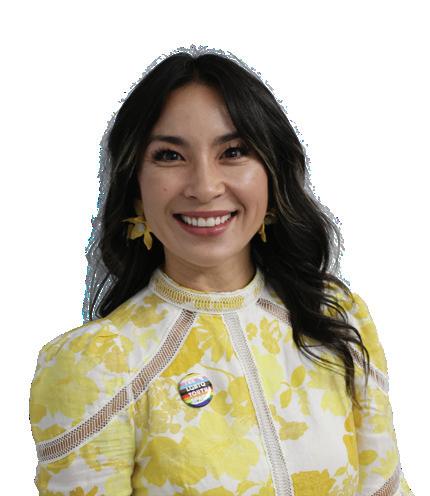
Chris Colohan
“(I) am a substitute teacher, experienced manager, long-time PTA leader, and parent of two kids in the district. In addition to bringing strong governance skills and experience to the table, (I) will focus on improving elementary school math, rebuilding trust, and making the district’s budget accessible and clear to all.”
Alison Kamhi
“I am the mom of two PAUSD children, a Stanford and Harvard Law graduate, a public interest attorney and an active volunteer. My campaign priorities are academic opportunities for all, mental and physical safety and belonging, and trust and transparency.”

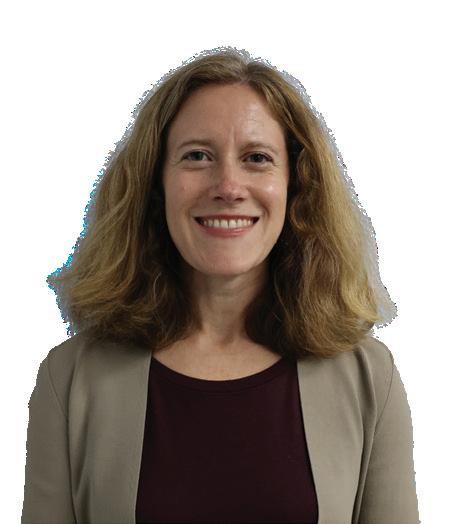
Josh Salcman
“I’m running to be a Trustee of the Palo Alto School District because I believe every student deserves an opportunity to thrive. My priorities include promoting both excellence and equity, building a culture of trust and transparency, and making sure our students feel safe, supported and included.”



“One
• 292 Airbands sign-ups across all grades
• 690 class spirit shirts sold
• 96 floats participants across all grades
• 900+ brunch and lunch game participants
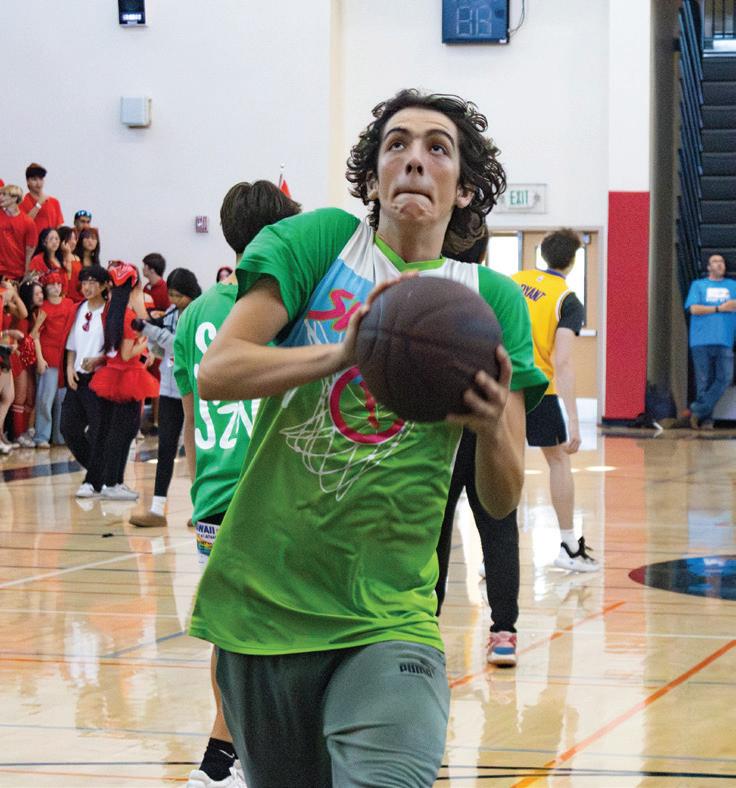
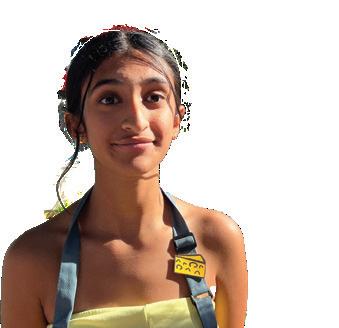
“One thing that I really enjoy about homecoming is our class getting together and we all dress up in funny costumes.”
—Tanvi
Ramachandar, 9


Colohan was alarmed to see that 19% of fifth grade students did not meet the California Assessment of Student Performance standard, shown on the CAASPP. Colohan empathizes with the many students who may struggle with the subject and plans to mitigate these concerns by designing a math plan similar to the Every Student Reads Initiative, developed by Superintendent Don Austin and Danae Reynolds, the Palo Alto Unified School District’s first literacy instruction director, in 2021.
“We want to inspire all our students to love learning and to enjoy it, not to have it be a burden (or) something which they feel like they’re pressured to do,” he said. “We need to make sure that we make opportunities for learning available, while also being careful not to build an incentive system that incentivizes hard work for the sake of showing that you can work harder than everyone else.”
During his years of substituting in math classes at Gunn, Colohan attributes parent feedback as a key to his understanding of how the pressures of rigorous courses can impact students’ mental health. To alleviate these stressors, he plans to improve parent-teacher communication regarding the advanced and alternate math lane options.
“One of the things I really want to focus on is improving trust all around, ” Colohan said. “Trust of parents (and) students (for their teachers and administration) and trust of the administration for everyone, because with trust, good things happen.”
The former treasurer also prioritizes transparency of school budget decisions to the community. According to Colohan’s endorsement website, “(Colohan) strongly believes that everyone in the community with an interest in the school district should be able to understand what is happening and why.”
As a candidate for the school board with experience as an attorney and immigrant rights activist, Allison Kamhi has taken direct steps in advocacy and community building through being the legal program director at the Immigrant Legal Resource Center, a nonprofit whose mission is to build a democratic society that values diversity and the rights of all people. With her children in PAUSD elementary and middle schools, Kamhi’s commitment to education is compounded by both personal and professional motives.
“I believe that all change starts at the local level,” Kamhi said. “As a parent, I want to ensure that our schools are safe and inclusive spaces where every child can thrive.”
Kamhi wants to ensure that schools emphasize the importance of safety for all children through investments in mental health, special needs services, and strong protocols against bullying and hate speech. She also values trust and community, recognizing that meaningful relationships with parents, teachers, students and community members are essential. With collaboration and transparency, Kamhi aims to build a community that supports children’s growth and success.
Her campaign is built on three core pillars: enhancing student safety, trust within the community and expanding academic opportunities. Kamhi’s past work in education includes serving on the School Board’s Ad Hoc Child Care Committee, where she helped grow aftercare options for marginalized students.
“We need to address safety not just in terms of physical security, but also through mental health resources and support for special needs services,” she said. “Every student deserves to feel safe and supported in their learning environment.”
Kamhi also believes in increasing communication between the school board and the community.
“It’s crucial that we listen to students and parents,” she said. “Their voices need to be heard in decision-making processes.”
With her extensive legal background from teaching Stanford Law to doing policy work and advocacy experience, Kamhi aims to bridge the gap between policy and community needs.
“I’m running because I care deeply about our children’s futures,” she said. “Together, we can create opportunities for all students to succeed.”
After Josh Salcman moved with his family from Missouri to Palo Alto, he served on the PTA as fundraising Vice President and on Greendell’s Site Council Board. Inspired by the wide-range of his children’s learning capabilities, it prompted him to immerse himself in the educational realm through volunteering at classrooms and playgrounds.
“I think what we need to do as a school district is help all students be successful,” Salcman said. “I think that’s a really valuable and rare lens that I can bring because of
the fact that I’ve got kids that span elementary through high school and also a child with special needs, so I understand what parents go through when they have a kid who needs extra support.”
Salcman prioritizes trust and transparency in PAUSD, educating the community on using their voice and supporting parents in navigating the education process for the district’s diverse student population.
“We have such a broad range of needs in terms of students in the district, from students who are struggling to reach grade level standards, to students that are sort of accelerating beyond what we typically expect,” Salcman said. “We need to recognize that all students have different needs, and make sure that we are doing everything we can so that every student can thrive and make as much progress as possible.”
Salcman values early childhood mental health to show students diverse opportunities, like Middle College and the Pathways Program.
“My sense is that a lot of stress and anxiety comes from is a mismatch between expectations and (personal capability),” Salcman said. “So I think if we can change things on the expectation side, and we can also change things on the side of the acceptance of oneself.”
Running for school board, Salcman has identified what it means to serve the community as a board member.
“The most important role of a board member as an elected representative of the community is to be available, accessible and accountable to the community,” Salcman said. “That’s something that I take really seriously, and invest significant time into.”

780 Arastradero Rd.
Palo Alto, CA 94306
(650) 354-8238
www.gunnoracle.com
Editorial Board
Editor-in-Chief
Kaylee Cheng
Ma naging Editors
Anne Dong
Charlotte Qian
News
Roy Lao
Sylvie Nguyen
Forum
Gwen Domine
Yu-Ming Liu
Features
Claire Jittipun
Vanisha Vig
Ya-An Xue
In-Depth
Eanam Maor
Lifestyle
Yael Gottesman
Violet Tivol
Online
Vanisha Vig
Ya-An Xue
Photo Editor
Naomi Wang
Graphics Editor
Sarah Xie
Staff
Business/Circulation
Sylvie Nguyen
Oracle/SEC Liaison
Gwen Domine
Graphics
Artists
Vin Bhat
Elise Hu
Jennifer Li
Jesse Li
Michael Lu
Azuki Radhakrishnan
Rin Sanami
Photographers
Vin Bhat
Mars Ezakadan
Grace Gao
Nicole Mok
Victor Peng
Chloe Wu
Reporters
Ezra Rosenberg
Vaani Saxena
Adviser
Kristy Blackburn
Yu-Ming Liu Forum Editor
Los Altos Hills recently held community workshops on Sept. 25 and Oct. 9 to discuss the 6th Cycle Housing Element — a plan to create new housing units, including multi-family homes at Twin Oaks Court, Foothill College and St. Nicholas School, to comply by 2031 with California’s State Housing Element Law. Town officials also presented this initiative to the Los Altos Hills Youth Commission on Oct. 15, where three Gunn student commissioners attended the presentation. According to Los Altos Hills Interim Community Development Director Jay Bradford, the families moving into Twin Oaks Court will be zoned to attend PAUSD. Because of the site’s proximity to Palo Alto, students will likely attend Gunn High School, Fletcher Middle School and Nixon Elementary.
The site’s housing units may increase Arastradero Road’s traffic congestion for students, increasing the number of vehicles on a road suited for the current rural nature of the area, according to resident Michael Grady, whose children attended PAUSD schools.
“The additional trip from Arasatradero to Gunn or Fletcher, or even out to Page Mill Road towards Nixon, would really be a mess,” he said.
According to Los Altos Hills Youth Commissioner and senior Janus Tsen, the district would be able to adjust to the change despite the possible surge in enrollment.
“When I was there, Fletcher was a pretty small school, so if you get a couple hundred more people going there, they’ll be short on resources,” he said. “But they can always expand or hire more teachers, so it’s not a massive problem.”
Los Altos Hills — aware of the growing housing demands and California’s State Housing Element Law — created a plan to convert single family residence land areas to multifamily housing zones, according to Bradford.
According to the town’s certified Housing Element, Twin Oaks Court is stated to have a project minimum capacity of 92 units. However, the town’s outside consultants presented a conceptual proposal, which showed how a development at Twin Oaks Court could be as many as 332 units, as reported by the Los Altos Town Crier. Additionally, if a density bonus law follows, the development could extend past 400 units. California’s density bonus law allows developers to build more units on sites as long as a minimum percentage of the development’s units qualify as affordable housing — they are offered for sale or rent at below market rate in terms of price. The Town’s Housing Element states that the Town will rezone the 15 acre Twin Oaks

Courts area from the current single family residence zoning to a new multifamily zone, allowing development for 20 or more units per acre. Thus, it would formally change the purpose of the land to account for the different types of new housing.
“The Twin Oaks Court site area is part of a broader effort to accommodate multifamily housing in Los Altos Hills, (allocating) 377 dwelling units across (Twin Oaks Court, Foothill College and St. Nicholas School) sites,” Bradford wrote in an email. “The town is responsible for facilitating development to meet its housing obligations under state law, and the successful implementation is essential for (Los Altos Hills’) continued autonomy and the preservation of its unique character.”
Grady voiced his concerns over whether developers would be incentivized to pursue even more change in the future, stating that residents have created a petition to communicate these concerns to the developers.
“We are close to (having) 300 signatures on the petition,” he said. “Our concern is that (if the town) rezones all 15 acres for 20 or more units per acre, (we’ll) have essentially no ability to prevent a developer from building potentially up to 500 units on that site, and it’s a big difference in terms of the traffic, safety and environmental impact to go from 92 units (to) hundreds of units.”
Residents in Los Altos Hills originally criticized the development of the plan last year. A communication issue caused this division of interests between the residents and town leadership, especially when the original application for the building plan was submitted to the California Department Housing and Community Development. Town residents felt their input and feedback was not adequately heard and were concerned that the new developments would destroy the town’s 70-year history of nature preserves.
After the Los Altos Hills government recognized that they had inadequately informed the residents, it increased outreach efforts to obtain residents’ input. The town is now attempting to ensure that the public has ample opportunity to provide comments on any potential new developments at Twin Oaks Court.
With Twin Oaks Court set to increase from 92 units to over 400 units, the steep increase may affect PAUSD student enrollment. Los Altos Hills is continuing to solicit resident feedback to educate the Housing Element of the environmental impacts at Twin Oaks Court.
As announced at the City Council Meeting on Oct. 22, town officials will hold another housing meeting on Nov. 14.





There have been 163 school shootings on United States school campuses since the start of the year, according to nonprofit organization Everytown for Gun Safety. The quantity of school shootings, as well as public fears, are both increasing. According to a Pew Research Center study from 2022, around 59% of high school students are worried about experiencing a school shooting, while only 7% of students are not worried at all. In response to the rise in school shootings, students need a seat at the table in these discussions around gun regulation to keep schools safe.
Since the early 2000s, school shootings have been on a steady rise in the U.S., with a 100% increase from 2012 to 2013 and another large increase following distance-learning. Data also shows the highest counts of school shootings within the past two decades, according to the Stanford Institute for Economic Policy Research. According to Education Weekly, there have been 30 school shootings so far this year that resulted in death or injury at K-12 campuses in the U.S., killing in total 13 people in total and injuring 47 more.
School shootings are also not out of range at Gunn. This school year, three students in northern California were arrested for threats of gun violence
targeting students or staff. In May, there was a shooting at Skyline High School in Oakland that injured two people. There have also been over a dozen bomb or gun violence threats toward schools this year in the Bay Area, including one that resulted in a lockdown at Gunn in April.
With the upcoming presidential election, the discussion of this gun violence epidemic on school campuses has moved onto the national stage. Notably, harmful political rhetoric increased following the Apalachee High School shooting in Georgia on Sept. 4. After the incident, Republican Vice Presidential nominee JD Vance addressed school shootings as a fact of life and claimed that the next step should be to increase school security. This argument echoes laws passed earlier this year in Iowa and Tennessee that allows teachers to carry concealed weapons as a safety measure. Policies like these are part of the “Arm the Teachers” movement and are widely denounced by bipartisan education organizations as ineffective and dangerous. Listening to teachers and students advocating for better school support and gun regulation will be more effective than equipping K-12 teachers with weapons to use against attackers.
Involving more students in discussion
around school violence can also help prevent potential shootings. According to a comprehensive 2004 study by the U.S. Department of Education and the Secret Service, 93% of school shooters planned their attacks out beforehand, and in more than 80% of shootings, at least one other person was cognizant of their plans. Furthermore, a 2019 study by the Secret Service found that 75% of active shooters showed warning signs including spreading threats, images or messages alluding to gun violence. With proper education and student input on preventative measures, adults on campus can better catch warning signs and relay information of threats to the proper authorities and systems in place to prevent attacks.
The priority in responding to school violence should be the safety of students and staff, and the conversations addressing shootings need to proactively combat the widespread issue as a whole, tackling deficits in gun control and enlisting student resources for the safety of everyone involved.
— Unsigned editorials represent the majority opinion of the staff (assenting: 16; dissenting: 2; abstaining: 0).
78.6%
OF SURVEYED STUDENTS ThiNk ThaT STUDENTS ShOUlD haVE a VOicE iN gUN cONTROl DiScUSSiONS
61.1%
OF SURVEYED STUDENTS wERE NEgaTiVElY OR VERY NEgaTiVElY impacTED bY NEwS REpORTS OF SchOOl ShOOTiNgS

Specifically banned the transfer and possession of assault weapons. This ban expired on Sept. 13, 2004.

Sir Ken Robinson’s TED Talk “Do Schools Kill Creativity?,” released in 2006, has garnered over 77 million views on the TED website. His popular critique of the school system led many to question the true nature of intelligence and whether society’s view of it is misguided. Taking into account the arguments brought forward by Robinson, it is clear that the structure of education limits students’ creative abilities by confining student freedom and placing an emphasis on grades.
The education system manages students in such a way that restricts liberties, with one example being the rigid schedule that require students to follow rules and dictate parts of student life. While this can be necessary to prevent schools from becoming madhouses, these rules also teach children to conform to the status quo rather than use their creativity. For instance, if a first grade student wanted to draw something new in their coloring book or use different colors for different boxes, they may be reprimanded for not following instructions and never explore this novel idea again. The structure of school therefore prevents students from having original thoughts, inhibiting growth and thereby creativity. This negative impact of schooling on student creativity can be backed up by a 2011 research study conducted by Kyung Hee Kim of William and Mary College. She found that high
school students performed worse on creativity tests than kindergarteners, and as they go through high school, their creativity levels decrease. Throughout the school day, students must constantly rely on their schedule to indicate where they should be and what task they should be doing. This monotonous daily lifestyle of going into the same rooms inherently restricts students’ ability to make their own decisions and instead pushes them to think only about completing the work in front of them. Furthermore, schools focus on grades and perfection, limiting the use of creativity. Core curriculum also reinforces this idea by rewarding students who have the answers memorized and penalizing those who approach problems differently. Schools therefore perpetrate a fixed mindset, the belief that one cannot change their capabilities, by punishing wrong answers. The Foundation for Economic Education also found that standardized tests and curriculums stifle the ability for students to grow and expand their horizons. At the same time, school prioritizes student performance over effort. Instead of valuing growth, a test grade encourages students to seek validation by scoring high rather than learning from their mistakes. This quantification of a student’s academic success with a number or letter creates a culture where worse grades are seen as a complete failure and a lack of intelligence rather than an area for growth.


In the ongoing debate over whether schools stifle or nurture creativity, many are quick to criticize the system and overlook the many ways educational institutions actively foster innovation. Although schools are structured with rules and schedules, they don’t necessarily inhibit creativity in their students. In fact, these very institutions often provide the foundation on which innovation can flourish. Schools give students access to various subjects, ideas and opportunities that help them develop creative thinking in ways that would be difficult to achieve without the guidance of the education system.
One way that schools nurture creativity is through exposure to a diverse range of subjects. Whether it is creating unique and eye-catching posters in graphic design or collaborating with the entire class to titrate and identify a mystery acid during chemistry, classrooms always have opportunities for creative problem-solving. Encouraging students to explore their potential interests often sparks creative thinking in unexpected ways. For
example, students may use what they learn from the Gunn Robotics Team to engineer a more efficient mechanical component or apply knowledge from history class and writing techniques from creative writing exercises to draft a novel set in the distant past. Without the school’s guidance, many students may never encounter the subjects that ignite their imaginations.
Schools also offer project-based learning, which, according to Prodigy Education, encourages students to find their own solutions and apply their knowledge in realworld scenarios. Instead of a rigor-focused curriculum that is centered around assignments and tests, projectbased learning creates opportunities for students to understand what they will be doing in the future. Often, these programs are group-based, preparing students for the collaborative work they will be doing in the future. Project-based learning is an outlet for creativity, allowing students their creative freedom in designing, building and finalizing their projects.
Indeed, schools may sometimes focus too much on standardized approaches, with letter and percent grades, but this does not mean that schools don’t try to foster creativity in their students. In fact, creativity emerges from challenges such as deadlines and quality control.
According to a research paper published in 2020 by the Journal of Management, creativity levels increase
Opponents to this claim argue that schools encourage students to think more creatively, perhaps by encouraging extracurriculars. There, students can find their passions and express themselves through experimentation. However, schools overlook the simple fact that the lack of true autonomy still remains. Extracurriculars are typically focused on a goal, such as competitions or showcases. For example, students on sports teams go to competitions often and spend their practices training for them. This means that they may not have as much creative freedom since they spend most of their time working towards an award. While schools may offer some opportunity for students to be creative and explore their own identities, it is clear that schools are at the very least indirectly responsible for a decline in student creativity. Schools are one of the most important centers for children to develop their own unique identity and form lifelong traits and skills that will benefit them down the road, since they spend six hours a day for five days a week in the classroom. With around 60% of CEOs stating that creativity is the most important quality for leaders to have, according to a 2010 International Business Machines study, it is extremely important that schools focus on fostering this trait to ensure future success. Schools should create an environment that encourages creativity to accomplish the goal of preparing children for adulthood, instead of hindering it by removing freedoms from the school day and quantifying a student’s self-
when a person encounters rules, regulations or deadlines. These challenges prepare students for real-world scenarios where constraints of time, resources and expectations are commonplace. In many professional fields, creativity thrives in environments that balance freedom with structure. For example, engineers are often forced to innovate within the parameters of safety regulations and project specifications.
The media commonly asserts that, as people grow older, the school system “drains” the creativity out of their brains. Not only is it impossible to compare the creativity of toddlers to high schoolers, it is also essential to consider the context in which this discrepancy occurs. As students progress through their education, they will naturally encounter more complex subjects, which can shift their focus from purely creative considerations to critical thinking. The observed declines in creativity may not necessarily indicate that schools don’t nurture creativity, but rather an evolution of more nuanced thinking. Creativity cannot be measured through numbers and studies, as it changes and grows along with the education individuals receive. While these studies raise important points about creativity in education, it does not account for the diverse ways in which students can develop and express their creativity as they mature.
Far from diminishing creativity, schools give students the tools and opportunities to explore, innovate and grow as creative thinkers. In an environment with guidance and support, students are more likely to transform their ideas into something truly remarkable.

Gwen Domine Forum Editor
As medical technology becomes increasingly accessible and popular, the accompanying resources have also become more popular. Some of the most significant of these resources include both physical and mental health resources. The rise in availability of online resources centered around health has led to a rise in reliance on technology to diagnose health conditions and an increase in misdiagnoses, which encourages self-treatments that may negatively affect one’s mental health.
The rise in availability of online resources centered around health has led to a rise in reliance on technology to diagnose health conditions and an increase in misdiagnoses, which encourages self-treatments that may negatively affect one’s mental health.
While Googling symptoms can occasionally be useful for people to understand what their malady is, it is a resource often misused or misunderstood. Often referred to as “Dr. Google,” the artificial intelligence generated result from a search engine provides a synopsis of the available articles pertaining to the search. In the case of medical searches, names of diseases and its symptoms are often the first things that the reader sees. While the blanket diagnoses presented to users can be a tempting answer, they tend to not be as accurate as a doctor’s diagnosis. A survey conducted in 2019 by OnePoll discovered that 43% of people have misdiagnosed their illnesses and believed that their self-diagnosed illness was more harmful than their true diagnosis. In total, 65% of respondents had diagnosed themself at one point or another, but 74% of these respondents stated that the results had created more stress. These false results can be worrisome for individuals who are already struggling and lead to “doomscrolling,” a term coined on social media in 2020 referring to the tendency to continue scrolling through news and videos on the internet, regardless of the potentially bad news it contains. This phenomenon is especially applicable to those searching for medical answers online. Being presented with the worst results can lead to a sense of panic, creating curiosity and a hunger for understanding.
According to a 2023 article by University of Colorado Denver, some of the most commonly misdiagnosed illnesses include bipolar personality disorder, autism, schizophrenia and attention-deficit hyperactivity disorder. These disorders often recommend expensive, time-consuming treatments that could be incredibly dangerous if administered to the wrong person. Additionally, misdiagnoses lead to improper treatment, which can turn out to be even more harmful to the patient than no treatment at all. With more over-thecounter medications, incorrectly treating one’s symptoms can be far worse than just a slight misunderstanding, and can lead to long-term health defects. A 2023 study from Indiana University showed that college students who selfdiagnosed their mental illness, such as depression and social anxiety disorder, were between five and 11 times more likely to be incorrect about their illness than correct. Treatment for mental health disorders often include medications that can be dangerous if taken by those who don’t require it, increasing the risk of complications and mood swings. According to National Public Radio in 2017, the Food and Drug Administration approximates that 1.3
million individuals around the country are injured due to medication errors each year. Many of these injuries are caused by misinformation, often stemming from websites either lacking proper education, or applying a blanket statement that is irrelevant to the vast majority of cases.
False results can be worrisome for individuals who are already struggling and lead to “doomscrolling,” a term coined on social media in 2020 referring to the tendency to continue scrolling through news and videos on the internet, regardless of the bad news in which it possesses.
When online sources generalize their claim (for example, “For treatment of a headache, one should take Advil”), it can be misleading to readers. This leads those seeking information towards potentially improper treatment, which can be ineffective or harmful to the patient.
Although the internet is a helpful and accessible resource that has saved many people a trip to the doctor, it can hold deeper dangers to those who misuse the available information. The surplus of medical information on the internet can often create a potential for fixating on
mental stability of those who continue to pursue it in an unhealthy way. Known as “cyberchondria,” the National Institutes of Health defines this disease as “a clinical phenomenon in which repeated Internet searches regarding medical information result in excessive concerns about physical health,” and is often linked to other mental health struggles, including anxiety and depression.
Some may say, however, that the internet and AI is an accessible way for those lacking the resources to seek medical advice from a medical expert. While some doctors are often difficult to reach or expensive, many areas offer free or low-cost clinics, as well as over-thephone advice nurses who have registered medical license. These alternatives are safer and help individuals better interpret their symptoms instead of relying on websites that aren’t accurate or provide extreme outcomes. Although the occasional internet search on one’s health can be beneficial to those simply looking for more information, a continuous reliance on these resources is often misleading and will place individuals in a far worse position than the one they started in.
Public initiatives, such as the Health Resources and Services Administration, provide access to healthcare, regardless of what patients can pay. When individuals bypass free, and often government-funded options such as these in favor of online resources, they are undermining the efforts created in order to make medical welfare supplies and consultations more accessible. These services are implemented for the better of the community, and not utilizing them not only decreases patients’ likelihood for improved treatment, but contributes to the ignorance surrounding them. Without enough patients, services such as these are often shut down and are no longer able to serve the public.
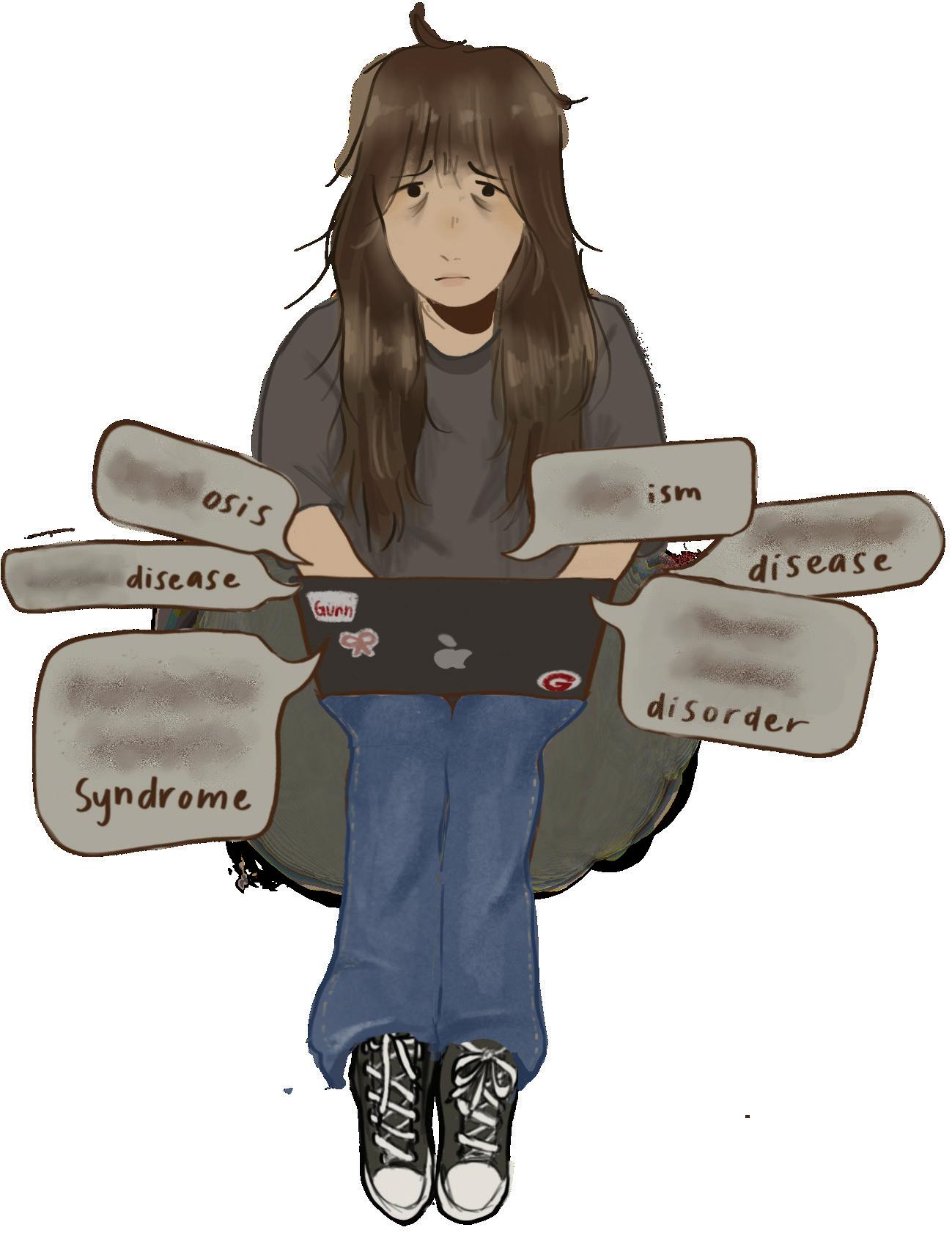
When individuals bypass free, often governmentfunded options such as these in favor of online resources, they are undermining the efforts created in order to make medical welfare supplies and consultations more accessible.
As accessibility in medical information online increases, the caution regarding it needs to as well. Although it can be a useful tool and provide information to those lacking the resources, the harm often outweighs the benefits, often causing misdiagnoses, and improper treatment that negatively impact one’s mental health. Therefore, the internet should not be viewed as a replacement for medical advice, and should instead be regarded as a resource to expand one’s knowledge after receiving a professional opinion.
If you are worried about yourself or a friend, contact the National Suicide Prevention lifeline at 988 or 1-800-2738255, the Wellness Center, a therapist, a doctor or a school counselor. If the threat is immediate, call 911.


Girl Up Club president junior Abby Moeljo understands that the media can affect an election by influencing how voters perceive the candidates.
“Obviously, news sources tend to sway people’s voting,” she said. “There are Republican and Democratic news (outlets) that can also sway people on how they view things. It’s interesting to see the perspective that people (have about) the clips that they take of Kamala Harris versus Donald Trump.”
Moeljo’s shares her beliefs on how varying factors such as age and community affect gender bias and is curious to see gender bias’ impact in the upcoming election and how it will compare to previous elections with similar circumstances, such as the 2016 election where the candidates were also a man and woman running against each other — Hillary Clinton and Donald Trump.
“I think (gender bias) depends on the community and age because older people tend to see a woman president as not as serious,” she said. “They might not be able to do things in the way a man would, which can definitely affect people’s bias a lot, especially if the two candidates (identify as) different genders.”
Through her club, Moeljo promotes feminism through hands-on activities and spreading information about women in novels, movies and their impact on the environment. Despite her efforts to combat it, Moeljo believes that gender bias is an issue that is going to be prevalent for the foreseeable future.
“I don’t think gender bias is going to go away for a long time, (and) I would say the most people can do is have an open mind and be open to hearing about different perspectives,” she said. “(People shouldn’t) think, ‘This person’s a woman — that’s why they’re saying that. This person’s a man — that’s why they’re saying that.’ I think everything should just be, ‘They’re saying this, and it is their opinion.”
—Written by Ezra Rosenberg





As the United States elections approach, students frequently encounter false or biased information regarding political campaigns. Social studies teacher for the Social Justice Pathway, Tara Firenzi criticizes the impact of social media on teenagers’ political views. She argues that these due to the calculated nature of social media algorithms, platforms are designed to manipulate students opinion rather than empower them.
“So much goes into the industry of persuasion and buying and selling attention,” she said. “I see it as totally baked-in and totally obvious in terms of how these companies work and how they are structured, and the fact that they’re trying to maximize profits.”
Firenzi views social media as an apparatus that lacks the goal to create engagement, only to profit off their users.
“They’re not trying to engage you,” she said. “They’re not trying to maximize your engagement with your friends (or) to help you have a better social life. They’re trying to get you to spend money and stay on their app.”
In her classroom, Firenzi creates a safe environment where students can express their opinions openly. She believes in the importance of being challenged by the perspectives and arguments of opposing views.
“It has to be a place where students can feel safe,” she said. “If you acknowledge that we want to move in the direction of progress to make the world a better (place) for everyone, or make an effort to allow people an opportunity to see other views (that can) actually change their minds.”


Firenzi encourages her students to think critically when consuming media and believes her students will be able to resist manipulation.
“Ultimately, I think it’s hard because every imaginable force is acting against (adolescents) without your knowledge,” she said. “(It’s) trying to get you to keep going back for that emotional hit.”
—Written by Yael Gottesman

Vaani Saxena and Vanisha Vig Reporter and Features Editor
Bias, as defined by Merriam-Webster, refers to “an inclination of temperament or outlook,” especially “a personal and sometimes unreasoned judgment.”
In today’s society, particularly in the field of politics, gender bias is a prominent issue. This can be seen in many ways, such as ignoring women’s ideas in meetings, paying them lower salaries compared to men in the same position or claiming female bosses are “overbearing” and “emotional,” while male bosses with the same qualities are “assertive” and “deserving.” In fact, according to Pew Research in 2017, 42% of women in the United States said they experience genderbased bias in the workplace.
Throughout history, women have been overlooked as leaders because of societal biases that depict men as “superior.” Yet this stigma didn’t stop women from protesting against stereotypes and finding a place for themselves in the political world. Even before obtaining voting rights, women from all around the U.S. ran for political positions, albeit often unsuccessfully. Everything changed in 1887, when Susanna Salter became the first female mayor in U.S. history in Argonia, Kansas. Nominating her with the intent of humiliating women and discouraging their future political participation, men assumed only the extremists of the Women’s Christian Temperance Union would actually vote for her. To their surprise, the local Republican party voted for her as well. This helped her secure a twothirds majority to become the first female mayor in the country. The 20th century brought forward more opportunities for women in politics. In 1916, Jeanette Rankin became the first woman to be elected into Congress, and in 1920, after 72 years of struggle, the 19th Amendment finally granted women suffrage. Although women were finally given the right to vote, the fight for gender equality was far from over. The following years saw multiple revolutionary firsts of women in the government, including Soledad Chacon, the first Latina woman elected into the executive office, and Crystal Dreda Bird Fauset, the first Black woman elected into state legislature.
As the 2024 election date approaches, U.S. citizens are reminded of these milestones. Vice President Kamala Harris made history in becoming the first female Vice President and South Asian and Black female candidate to run for presidency. Harris and Hillary Clinton, who was the first female major party presidential candidate, paved the way for women to become crucial candidates for the Democratic and Republican parties in presidential elections. However, they have both encountered struggles and faced biases that are reflected in the way they are treated by other candidates in the media.
I absolutely believe that there is a difference in the way that a lot of young girls and female debaters are treated. They hate to see girls being passionate.
Senior Karen Tang
For Harris, these prejudices are evident in the frequent mispronunciation of her first name, as it has remained inconsistent throughout her entire career as San Francisco’s District Attorney, California’s Attorney General, a member of the U.S. Senate and Vice President. Furthermore, according to a National Public Radio article, former President and current Republican nominee Donald Trump continuously mispronounces her name and explicitly states his indifference in doing so.
“They were explaining to me, ‘You can’t say “ka-MALA” — you can say “COMMA-la,”’ Trump said. “I said, ‘Don’t worry about it — I couldn’t care less if I mispronounce it. I couldn’t care less.’”
Honoring someone’s given name and titles is a way to show respect.
A paper from the National Library of Medicine studied multiple groups of people and noticed that, in general, men are more likely to be called by their surname than women. This is partially because a woman’s surname is less permanent — traditionally, women take their husband’s last name after marriage, but this seemingly innocuous action has a deeper meaning. In white-collar fields, men are more prevalent in higher positions. This stereotype is engraved into society, leading individuals to believe that men are superior and will thrive in professional work environments, while women would not.
The New York Times Magazine mentioned that a simple change Trump could make to combat stereotypes against women is to treat Harris with respect and kindness instead of berating her. In additional attempts to belittle her, which were not based on skill or any factual attributes, Trump referred to Harris as “mentally impaired” and claimed she had used coercion to advance her career.
These double standards can still a prevalent issue. In the Lewinsky and Bill Clinton scandal, admitted to having inappropriate intern Lewinsky, his career never asked to resign from office failed. Lewinsky’s career in politics, public manner when she was exposed
These injustices toward for national level, however. With elections, traces of this prejudice local area like Silicon Valley. Currently, running for the board are women and Allison Kamhi. Specifically, who are both women of color, from voters in different ways.
Chiu, also having a similar the media, had witnessed lots assistant of former film producer Weinstein, Chiu was asked to Working with Weinstein exposed from men, showing how easily and marginalizing women.
“(The article she wrote) directly sexism in the case of a sexual assault,” (weaker in the power imbalance), where your boss is a wealthy man in an organization.”
Despite being the Ohlone president and a global advocate that voters still have doubts regarding because she is a mother.
“Voters have this underlying should do less,” she said. “Therefore, of underlying belief that (women Similarly, Chiu-Wang, who for the second time after her frustrations with residents’ attitude particular, she shared her dissatisfaction Palo Alto Daily Post that incorrectly actual age was 41.
“It hurts me because people running,” Chiu-Wang said. “I’m and have had my own business. resume, I am well-established and But people just think I’m too young, when you’re a woman.”
The same article also neglected endeavors, such as DreamCatchers, on quality education for low-income from stating the wrong age, the Chiu-Wang’s past, such as her time on “The Apprentice.”
“(The article talks about) something she said. “‘The Apprentice’ was Donald Trump — a billionaire he is. And I know it’s catchy cover any of the substance (of Both of these candidates lifestyles, but even with a plethora constantly asked how they will with time-consuming jobs — towards men.
“They don’t ask that to the men,” everybody that’s running (for school (ask) the same questions to the A woman harboring political but gender-bias and stereotypes environment for young women competition.
Senior Karen Tang, who has seven years, has directly experienced her differently because of her politics in their emphasis for arguments women, as they can be perceived “opinionated.” In one particular woman in the room during elimination was the subject of some harsh
“The judge told us that arguments, we had better evidence had won the debate on a factual but that they didn’t want to vote
election, along with its presence in local elections and workplaces
can be seen throughout history and are the late 1990s, in the infamous Monica scandal, even though Clinton openly inappropriate interactions with his White House continued mostly unscathed. He was office and the attempt to impeach him politics, on the other hand, ended in a exposed and shamed by the media.
for women do not strictly occur at the With the upcoming 2024 school board prejudice can be found even in a progressive Currently, three out of the five candidates women — Rowena Chiu, Nicole Chiu-Wang Specifically, Nicole Chiu-Wang and Rowena Chiu, color, have experienced feeling gender bias
similar experience with being spotlighted in lots of first-hand gender bias. As a past producer and convicted sex offender Harvey come out and tell her side of the story. exposed her to power imbalances and abuse easily men can get away with objectifying directly addresses the issue of racism and assault,” Chiu said. “Women are usually imbalance), especially in a power dynamic man and you are a very low level woman
Ohlone PTA president, JLS Connections advocate for the #MeToo movement, Chiu says regarding her ability to do her job well
underlying belief that women and people of color “Therefore, for women of color, there’s a sort (women of color) should know their place.” is running for school board president first attempt in 2022, expressed her attitude toward female candidates. In dissatisfaction about an article from the incorrectly stated that she was 34 when her people already think I’m too young to be “I’m 41 years old, have kids in the district business. I’m an attorney by training, I have a and I have a lot of talent and experience. young, and I think it’s a double whammy neglected to credit Chiu-Wang’s current DreamCatchers, a non-profit organization focused low-income middle school students. Aside the article also focused on events far in her history in beauty pageants and her something that happened 10 years ago,” was a reality competition in 2010, before who needed an apprentice — was who against the headlines, but they didn’t my current campaign).” are their own people with unique plethora of life experiences, they are will balance taking care of their children questions that are rarely ever directed men,” Chiu-Wang said. “For the record, school board) is a parent, and they don’t the men that they ask the women.” political power faces her own set of struggles, stereotypes have also created a precarious women and girls attempting to join the
has competed in parliamentary debate for experienced moments where judges treated gender. Debate, which is similar to arguments and logic, can isolate perceived as too “emotional” or particular tournament, as the only elimination rounds, Tang criticism. we had better evidence and we factual level, vote for us








The wind brushes past their faces as they glide swiftly through the park, the wheels of their skateboards rattling on the pavement beneath them. With their hearts racing and minds focused, they pop the tip of the board and soar into the air. They fly with their skateboards until they miss their landing and fall down. Nonetheless, cheers and affirmation from those nearby erupt around them, and the opportunity to try again preserves their smiles.
The skateboarding group, Despite, which began as an informal group of skateboarders in the Bay Area in 2018, has formed a strong community and become a home for many teen skateboarders.
For senior Oren Kim, skateboarding has been a prominent aspect of his life since seventh grade. Although he already owned a skateboard and had begun learning to skate, he only became hooked on the sport after he started watching professional skateboarders.
“I just couldn’t comprehend how they were able to move that way,” he said. “(Their) style, music and whole vibe (drew me in).”
Finding a positive community is one of the many benefits Kim gained from skateboarding. He has not only been able to meet new people from different areas, but he has made friends from the skateboarding community who uplift and encourage him. According to Kim, because skateboarding is an individual sport, there is very little competition. Instead, each person focuses more on their own progress and supports others through their unique learning processes.
“It doesn’t matter if you’re putting out a video as a professional skater or if you’re just a high school group of friends like us,” he said. “If you post (your tricks) on Instagram or YouTube, people are going to want to watch it. People see my stories, (and) they support me in other ways too.”
I just couldn’t comprehend how they were able to move that way. (Their) style, music and whole vibe (drew me in).
Senior Oren Kim
and challenge. According to Eron, she applies this attitude to numerous aspects of her life, even outside of skateboarding.
“I’ve learned a lot of life lessons from skateboarding,” she said. “If you’re not falling, you’re not trying hard enough. (I now know that) it takes a lot of falls to eventually land a trick, and I think you can apply that to a broader, (and more) general perspective in life. If you aren’t making mistakes, (then) you aren’t really achieving anything.”
Swedish and Denmark skate styles were super unique. It was really interesting to learn different styles of skating and meet a bunch of new people.
Senior JJ Racz
Kim echoes the importance of physical and mental grit when learning to skateboard. After years of skateboarding, Kim has not only become a part of a close-knit community but also gained important lessons that have shaped him as a person. He has contributed many hours and has undergone numerous challenges within the sport. Ultimately, he credits skateboarding for a large part of his personal growth.
“I think skateboarding is a huge challenge because there are physical challenges like getting hurt and falling, but also a lot of mental challenges, like frustration (from) not being able to land a trick,” he said. “(It’s about) overcoming those challenges, like landing a trick that you’ve been working on for a long time.”
For Eron, skateboarding is a means of escape and helps her balance different aspects of her life, such as school and family.
“It’s very freeing to skateboard — it helps me destress when I’m tired of school, my parents or other people in my life,” she said. “I can go to the park and just focus (on being) there instead and do tricks to hang out with my friends.”
According to Eron, when she first began
connection with other girls who had similar experiences and used this bond to motivate her to work harder.
To some skaters associated with Despite, it is simply a friend group of people who share a love for skateboarding with the intent of having fun. For others, it is a group that grants them opportunities to pursue their passion of skateboarding in a variety of ways. In the summer of 2023, part of Despite went on a trip to Denmark and Sweden with the intent of expanding their group and exploring new skateboarding areas. One member who attended was senior JJ Racz, who assists in designing merchandise and is featured in videos. Racz especially enjoyed learning about different cultures and skateboarding techniques that broadened his perspective.
“Swedish and Denmark skate styles were super unique,” he said. “It was really interesting to learn different styles of skating and meet a bunch of new people.”
If you’re not falling, you’re not trying hard enough. (I now know that) it takes a lot of falls to eventually land a trick, and I think you can apply that to a broader, (and more) general perspective in life.
Senior Shina Eron
According to Racz, regardless of the stereotypes skateboarders are subjected to — such as reputations of vandalism or disturbance towards the community — one of his goals is to try to spread positivity through the sport with his friends. For example, Despite founder James Polly donated profits from shirt merchandise to support hurricane relief for families in Mexico. By making merchandise and videos, along with donating to charitable causes, this group of friends rejects the

growth for many teens. Senior Shina Eron, for example, credits much of her new mindset and character-building to her experience in skateboarding for over five years. Throughout her journey with the sport, she has


—Written by Eanam Maor



When he was little, junior Cole Akins’ dream was to fly for the Navy. Although his aspirations have changed slightly since then, joining the United States Air Force Auxiliary Cadet Program allowed him the opportunity to learn about aerospace while wearing a uniform.

Inspired by a friend from his hometown in Nebraska, Akins joined Squadron 10, the Palo Alto unit of the Civil Air Patrol, when he moved to California.
Every Tuesday evening, Akins spends two hours at the West Valley Flying Club training with his fellow cadets of ages 13 to 21. Training is split up into four parts — physical training, character development, aerospace education and emergency services.
Outside of these weekly meetings, cadets have the opportunity to sign up for weekend events. Recently, Akins participated in the Ultimate Bear & Wings Challenge, an annual aerospace competition between every California squadron that requires the cadets to apply knowledge from their weekly training.
“You take a 50-question quiz with your team about aerospace, and you all work on it together,” he said. “You do emergency services where you have to treat patients, take a quiz for physical education, swim across the pond, run a bunch and do pull-ups.”
Some skills he’s learned from the program, such as memorizing procedures or learning emergency responses, have translated into other aspects of his life, including academics.
“I’ve learned a lot of study skills because you have to do a lot of memorization (as a cadet),” he said. “I think
After a long school week, junior Airealana Williams takes a 15-minute ride down to Moffett Field and spends a part of almost every weekend training with the United States Naval Sea Cadet Corps.
At the end of 2022, Williams approached the program with a little hesitance. However, it quickly became one of her greatest passions.

“It was so difficult,” she said. “I felt like I needed a challenge in my life at that time, and it really challenged me, so I kind of just stuck with it.”
As a part of USNSCC, Williams not only dedicates her weekends to training, but also spends summer and winter breaks immersed in the program. Last year, she chose to do recruit training in Hawaii, which was a twoweek introduction to the program that helped Williams appreciate the importance of teamwork and allowed her to make long-lasting friendships with others in the training.
“I’ve been able to make so many connections with people,” she said. “I still have friends in Hawaii. I haven’t been over there in a while, but I always have a place there now, which is great.”
However, a downside to the large time commitment of the program is the difficulty of managing academics while meeting the demanding hours of being a cadet.
“Sometimes I have to prioritize the cadets over school and that really sucks, but you have to sacrifice some things and some weekends,” she said.
However, Williams herself doesn’t intend to join the Navy. While USCNCC is one of her passions, it is also a stepping stone in her life, and as she grows as a person, she is open to more options for her future career.
“If I go to college and I still do military training,
Freshman Jazzy Mendoza aimed a sleek handgun in a tight grip as she concentrated on a target down the shooting range. Blocking out her surroundings, she pulled the trigger.
Over the summer, Mendoza participated in the Graduate City Police Academy — a four day long program based in Redwood City for students ages 13 to 17. Her family background in the police inspired


Mendoza and her sister, freshman Nicole Mendoza, to apply.
“I have an aunt who’s currently a volunteer for the Redwood City Police Department and two other family members in the cadet program for San Mateo,” she said. “I joined the program because my family members also joined when they were my age, so I thought it would be a great experience.”
Each day focused on a different discipline and were led by mentors such as firefighters, investigators, sheriffs and police captains. While she originally thought the officers leading the program would be strict and intimidating, their teaching style shaped Mendoza’s positive outlook on learning about the police force.
“They gave us lots of opportunities and they weren’t as strict as (teachers at) school,” she said. “We got to do a lot of hands-on projects, and that was what made most of us excited for the next day.”
Some of these projects included real-life scenarios that police officers encounter. For example, Mendoza toured the police station to listen to real 911 calls and learned how to use defensive weapons such as tasers and guns.
“It was super fun because we learned about drugs and the K-9 (police dogs),” she said. “An investigator also came in to teach us about crime scenes and it was super cool to see real evidence and the tools they use.”
The SWAT training, which included push-ups, curl-

character development has probably been the biggest (takeaway) for me. You learn about everyday situations and you learn how to navigate them, and I think that’s really important for us to (know about).”
The cadet program has inspired Akins to pursue a military career. He hopes to enroll in the United States Naval Academy and later transfer to the Marine Corps. Although cadet ranks don’t translate into the military, the program provides a close community for Akins to learn skills similar to those needed in the Marine Corps.
“My favorite part is that you get to meet a lot of really cool people, and I’ve made a lot of great friends,” he said. “It’s nice to progress with them and become a better person and leader overall. You have people guiding you every step of the way.”
—Written

college,” she said. “I’m doing that because my goal is to do plastic surgery or go into medicine. I didn’t know that I could do both military and medical training simultaneously, which I think is really cool.”
In the meantime, she looks forward to making more memories during training while working hard to achieve her goals.
“The community is amazing (for both) building relationships with people and learning new things,” she said. “I think the program really teaches you how to be patient and respectful. It can be really stressful, but I think it’s the most important for me to remember that I am doing this for a reason, and it’s really impactful in my life.”

ups and pulling a 165-pound dummy, proved to be a challenge for Mendoza due to the intense physicality required.
“The training was the hardest thing for all of us, especially because there (were) 160-pound bodybuilding SWATs there,” she said. “It was like, ‘Wow, look at us compared to them — how could we do the same?’”
Coming out of the summer program with a positive experience, Mendoza entered the Redwood City Cadet program this school year.
“Compared to a summer program where you just stay in one place, in the cadet program, you actually get to go to the actual scene with the officers,” she said. “I think the program will give me a better perspective and understanding of what I want to do in the future.”
Self-proclaimed producer, artist and DJ junior Jasper Thrun has decided to take his musical career and experience to the next level this fall: He is currently working on the release of his first album “VISION,” partnering with the music label Range Music to advise and guide his early works.
Thrun launched his project after a handful of impactful experiences altered his life this summer. Rather than dwelling on their negativities, he decided to use them as positive fuel and inspiration for his music.
“Looking back at what happened to me is wild, but it inspired me so much,” he said. “All those experiences are part of the album, and the album really sums up the lessons I learned from them. It tells a story.”
Thrun’s musical career started at seven years old, when he began taking guitar lessons that sparked his passion for music.
“I’ve been doing music my whole life,” he said. “I have recordings of me in the studio when I was eight years old. I used to do covers of songs when I was that age.”
At the age of nine, Thrun started producing music on his own — experimenting and playing around with various musical softwares and instruments. After consistently making his own beats and eventually combining them with rapping and singing for a few years, he was able to make music in all genres and experiment with his sound. However, until this summer, he had yet to pursue a serious release of music.
“Last year, I was making rap songs that I didn’t release or take seriously, and that’s because it was not connecting with me enough,” he said. “The music that I want to release to the world is stuff that connects with me personally. If there isn’t a connection between me and my music, then I don’t feel as if it’s something that I want to share.”
However, after this summer, Thrun was able to collectively reflect on the life lessons that allowed him to give new life to his music.
“I learned a lot of lessons from the events in the summer,” he said.

Thrun began working on his project during the summer in his studio located in San Francisco. He began producing and organizing the ideas behind each song and later filled out the skeleton ideas with his creative musical skills. After recieving guidance from his manager Matt Nadler, who works at Range Music, Thrun was connected to Range Music with the possibility of furthering his musical career.
“They’ve offered to sign me as a working artist, but I would mostly be taught and trained on how to make music before I can actually officially release it through them,” he said. “It’s really exciting and a big step in my career.”
Overall, Thrun expresses his talent through his profound passion and excitement for music. He describes it as something everyone can share and understand, which is what makes it special.
“It’s just the one thing that can connect with every single person, no matter where they come from or what language they speak,” he said. “(With any differences), everyone will hear the same thing and can usually feel the same emotions. I think that’s beautiful.”



Growing up, music has always been a huge part of Josyula’s life. Sparking her singing journey, Josyula’s parents signed her up for her first Indian classical singing class when she was four years old. In middle school, she joined choir, and in high school, she continued to explore pop music and began covering songs.

Josyula’s years in choir helped her shape her voice and find
“I took choir in seventh grade with Ms. Fitzhugh and started to sing pop music more,” she said. “Having choir every year since seventh grade has kept my voice active and shaped my technique.”
Recently, at the age of 17, she released her first song: “I’ll Be Fine.” Through producing the track and developing her vocal style, she was able to truly find her love for music and learn how to make it her own.


When creating her first single, Josyula took inspiration from R&B and pop singers, specifically focusing on new beginning.
“I wrote about how (seniors) have to leave (their homes, school and friends) behind,” she said. “You’re leaving everything you know behind and starting a new chapter. It’s good and bad, but ultimately, everyone has done it, so I know that I’ll be fine.”
Even though Josyula does not want to pursue a career solely in music, she still wants it to be part of her life after high school.
“I don’t plan on doing music full-time, but I plan on doing a double major or a minor (in music) in college, continuing to make music and always having music in my life,” she said.
Josyula’s love for music has only grown over the years. Throughout her singing career, her voice has improved and the types of music she sings has broadened throughout all genres.
“I do cover songs and make my own music all because I love it and it makes me really happy,” she said.
—Written by Vaani Saxena
Every October, National Football League games are a pop of pink, with players wearing pink accessories, mascots waving pink flags and football fields marked with pink bows — all to celebrate Breast Cancer Awareness Month.
During the month, professional sports teams join the international health campaign by showing solidarity, providing resources and hosting fundraisers to donate to charities. In 2001, the Women’s National Basketball Association were amongst the first parties to participate, holding Breast Cancer Awareness games during their August Fit Month, a series of events that promote physical and mental well-being for sports fans.
According to Assistant Athletic Director Kevin Johnson, there is no school-wide policy regarding breast cancer awareness, instead, individual teams and players are given the opportunity to choose how they observe the month.
For example, football players are encouraged to wear pink during games. Senior Jeremiah Davis, who plays quarterback and wide receiver on the varsity football team,
stocks up on pink sports gear and tries to wear it every game during October to honor his aunt who passed away from breast cancer while he was in middle school.
“A lot of people that play sports know that October is Breast Cancer Awareness Month, but I feel like a lot of people just wear (pink) to fit in and try to rock the style,” he said. “They might not have a reason. But since I have a connection, I try to take it more seriously. If you want to wear (pink) to fit in, it’s not really bad because you’re still representing it — just don’t do it as a joke.”
Davis also notes the importance of raising awareness outside of October, suggesting that Gunn hosts an event or creates merchandise.
“It would be cool and I think more people would notice (the cause),” he said. “It’s not like breast cancer awareness stops once the month is over, so we should continue representing it. It’s also more unique since other schools might only (host events) during October.”
For the past two years, senior Lia O’Donovan and her mom have collaborated with small businesses to host a day-long fundraiser in their front yard, selling baked goods and crafts to donate profits to
the American Breast Cancer Foundation. With a history of cancer in the family, O’Donovan has grown up around fundraising walks and runs. This time, however, she decided host her own fundraiser control around where profits go.
Though O’Donovan appreciates sports teams raising awareness, she believes more information regarding breast cancer prevention and testing needs to be accessible.
“I know my brother’s soccer team will wear pink for their games, and last year, they all dyed their hair pink,” she said. “I think that’s a great way of raising awareness, but I think there’s another element of it where, yes, people are aware about breast cancer awareness month, and they’re aware that it is an issue, but there’s less awareness about getting tested and getting your mammograms because that is a real problem. People think it won’t affect them directly, but it always can.”
—Written by Ya-An Xue

The line between sports and politics has shifted significantly over the years, and recent events have thrust athletes’ political advocacy to the forefront. With the surge of social media, fans experience their favorite players through the duality of official television coverage and prominence on online platforms. The NBA has amassed 8.8 million Instagram followers, which surpasses that of any major United States sports league, the NFL posts viral football coverage videos on TikTok, and athletes themselves engage directly with their fans across various platforms. With increased media consumption, athlete coverage is larger, more visible and more personal than ever before.
For history teacher Chris Johnson and many other sports fans, this prompts a broader question: Do athletes have a greater responsibility to speak up in politics or should they just “shut up and play”?
“You can go back to the ‘68 Olympics in Mexico City, when you have the Black Power Salute,” he said. “(Political activism) was much more subtle, but I think it’s more overt now, because athletes can be almost grouped with A-list celebrities. The spotlight is on (athletes), especially with televised sports.”
The past decade has seen a surge in athletes taking bold, public political stances. Among one of the most notable examples is San Francisco 49ers quarterback Colin Kaepernick taking a knee during the National anthem in 2016 to protest systemic racial injustice and police brutality against Black Americans. He and his former teammate Eric Reid have signed
president Donald Trump called for Kaepernick to be fired for his protest. Although the NFL maneuvered to address public ostracization of Kaepernick, reinforcing free speech and representation, Kaepernick was unable to restore his football career to its original stature.
In other cases, however, fans have difficulty understanding an athlete’s actions. After hitting a double in July, Tampa Bay Rays shortstop Taylor Walls covered his ear with one hand and pumped his fist in the air, mimicking Trump’s gesture after his assassination attempt in Pennsylvania. Walls said that his Trump-inspired celebration was not intended as a political endorsement, but instead, a compliment to the former president’s “inspirational behavior.”
Actions like these blur the line between symbolism and endorsement and call into question fans’ abilities to discern the two in complex situations.
With socio-political pressures on the rise, athletes and the majority of Americans have come to terms with one thing: 69% of Democrats, Independents and Republicans support athletes advocating for general voting rights, according to a 2023 poll by the Washington Post.
However, Kansas City Chiefs quarterback Patrick Mahomes said in a September news conference that he would not endorse Donald Trump or Kamala Harris in the November election despite Trump repeatedly referring to Mahomes’ wife, Brittany, as a supporter of his campaign.

“I don’t want my place and my platform to be used to endorse a candidate,” he said during the press conference. “My place is to inform people to do their own research and then make the best decision for them and their family.”
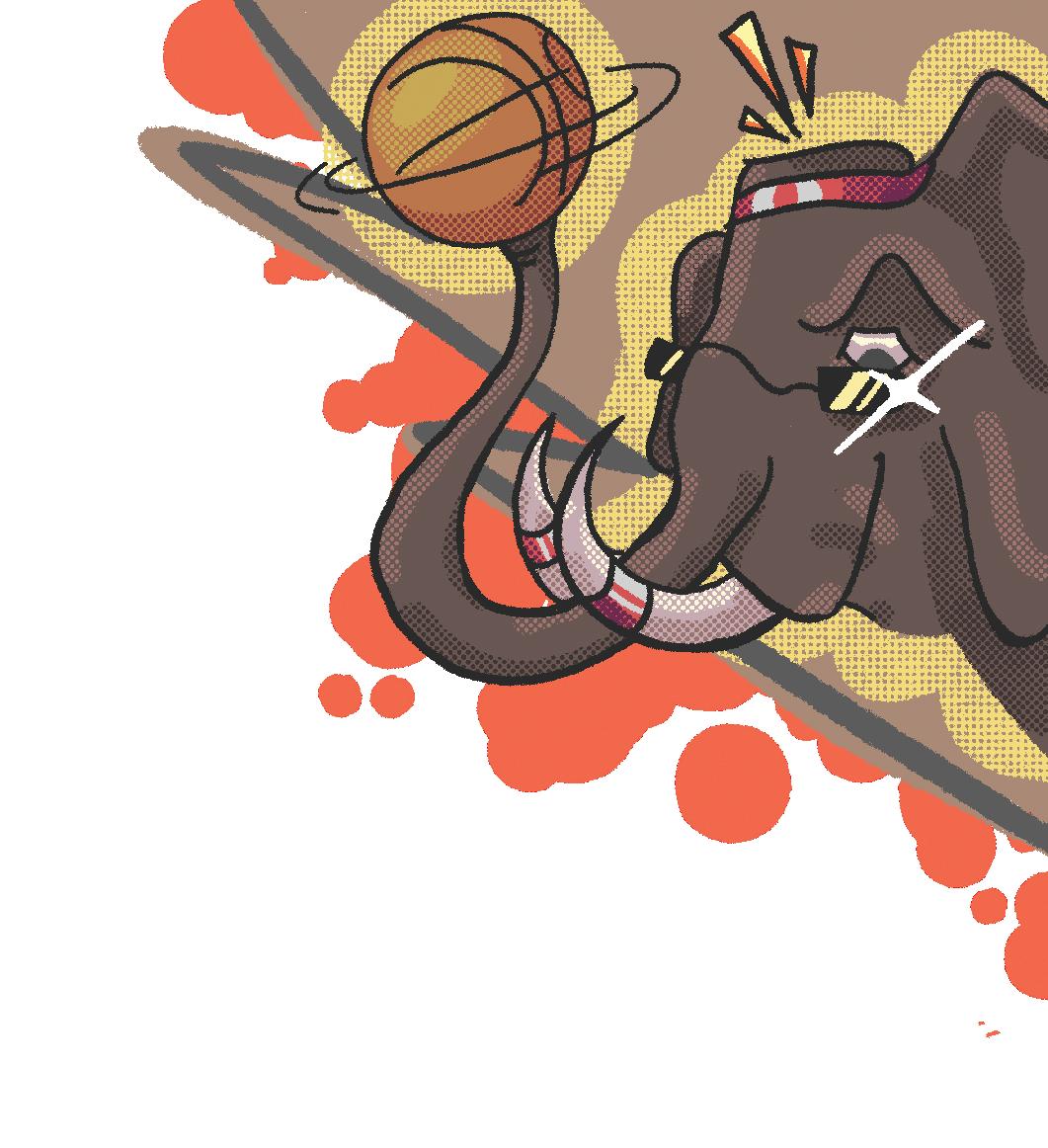
Striking a similar chord, sports fan and junior Aakash Koneru believes that professional athletes’ jobs are primarily to play. Even if he disagrees with their views, he continues to support their sports and separates athletic performance from political stances.
“It’s up to the people to call them out or decide if they agree or disagree,” he said. “Because, once again, I think athletes have their platform and are paid because of their athletics. I don’t care about the things that are on the other side. At the same time, I wouldn’t say my own political beliefs are really shaped by what their beliefs are because I like (them) as basketball players, not as politicians.”
Still, Koneru clarifies that sports figures being politically active is one form of expression, like in Golden State Warriors head coach Steve Kerr’s speech at the Democratic National Convention in August and his impassioned plea for gun control in 2022.
“If you truly care about an important issue, it’s good to speak out,” Koneru said. “Sports teams, at the end of the day, are made up of people who have opinions, and they’re not just about politics.
According to The Athletic senior editor Rich Hammond, who has worked to cover many public athlete political displayers including Kaepernicks’, the 21st century generation of athlete activists mostly trace their roots back to legendary rousers such as Muhammad Ali and Tommie Smith, who took a stand against the Vietnam War and racial injustice, respectively, when doing so wasn’t as easy. Hammond also references Michael Jordan as a trailblazer by explicitly avoiding political activism during the launch of his sneaker line.
“(Reporters) were asking him about politics and why he didn’t express himself,” Hammond said. “He had a famous quote of, ‘Well, Republicans buy sneakers too,’ meaning that (he might) offend half of the people out there who are going to buy his Nike shoes.”
For Hammond, watching athletes like LeBron James speak out on topics like Black Lives Matter and police brutality represents renewed athlete political influence.
“You see people who engage with that either positively or negatively, and say, ‘Yeah, I am interested in what LeBron James says,’” he said. “Like anybody else, (as) the more people take interest in you and what you’re saying, the more you’re going to say it, right? So other athletes start coming forward and saying how they feel, and so, (political expression) is definitely becoming more prevalent.”
When I agreed to bake fun Halloween-themed treats, I didn’t anticipate myself standing in my kitchen at 11:30 p.m. attempting to salvage a batch of brownies. However, while these didn’t all go according to plan, I eventually managed to pull it together and make a few festive baked goods. Armed with a million candy googly eyes and enough food dye to stain my hands, I set off on my baking journey.
While many baking aficionados would tell you that box mixes don’t count, the one hill that I will die on is the Ghirardelli brownie mix. The product is not only affordable and convenient, but arguably tastes better than the homemade kind. Although the brownie base was pretty easy to make, the decorating was what threw me off. My original plan was to create a pumpkin patch with green frosting and candy corn, but this became impossible after my royal icing — which I whipped together out of water and powdered sugar — refused to comply, and the pumpkin candy corn looked too big and out of place. So, I decided to scrap that idea and create some graveyard-inspired brownies instead. To achieve the perfect dirt effect, I crushed up some Oreo cookies and used melted chocolate to make sure they would stay on the brownies. The gravestone, although imperfect, was carved out of a graham cracker with “RIP” written in melted chocolate on top. These were definitely fun to make, but I’m not sure how well the idea translated into reality.
My next adventure was Frankenstein’s Monster Rice Krispie Treats (no, not Dr. Frankenstein himself — we see you Mary Shelley). Appearance-wise, these were almost my favorite. I did add an absolutely inordinate amount of green food dye to the mix, but a small dose of green chemical never hurt anybody. One of my biggest struggles was ensuring that the top of the treats were flat to create a smoother surface for my decorations. When I poured the freshly made Rice Krispie Treats into a pan, I simply used a spatula to compress it. I ended
since they were smaller details, I put the chocolate in a Ziploc bag and cut the corner off to create an easier method of decorating. Photographing them may have been a struggle, but it was all worth it for the adorable results. The eyes do make them look a little bit insane, but he is a monster, after all.
My final endeavor for this baking series was making spider cookies. Since the body of each spider was made of a peanut butter cup, I chose to make peanut butter cookies to go along with it. Unfortunately, they lacked the volume I’d hoped for. The peanut butter cups, though, completely made up for it. Instead of the Reese’s Peanut Butter Cups that dominate the industry, I used my all-time favorites: The Trader Joe’s Dark Chocolate Peanut Butter Cups. They’re significantly more rich, with a perfect peanut butter to chocolate ratio that worked well with the cookies. For the legs, I made another batch of melted chocolate, which I also used to glue on the googly eyes. I continued with my Ziploc bag piping strategy, a method that has yet to fail me. Piping out the legs was a slightly harrowing experience, as I don’t always have a steady hand, but a fear of failure drove me to try my best in recreating the spindly spider legs that could make or break the cookie. If I were to rank them compared to the others, I would rate it above the Frankenstein’s Monster Rice Krispies, simply because of how adorable they were along with the enticing peanut butter cup on top.
Halloween is the epitome of the fall season, and scary desserts are the perfect embodiment of a holiday filled with fright and sweets. I would consider myself relatively adept at following a recipe, but these treats turned out to be more of a challenge than expected while I went off the path to create the cutest and most delicious treats possible. The ups and downs of the fall baking adventure were unexpected but joyous, and gave me an amazing excuse to eat more sugar than anyone needs this close to Halloween.
—Written by Gwen Domine

The suspense of walking through a haunted house and not knowing what will pop out at you might make snakes wriggle in your stomach and send jolts of adrenaline down your spine. As October nights stretch longer and the anticipation of a full moon arises, the cast of Halloween characters can include rats, pit bulls and sharks. However, rather than being mere sources of fright, these creatures deserve a closer look. Although these three animals have a certain reputation due to mainstream culture, this season, their nuanced narratives should be celebrated and understood.

Once again, mice and rats seem to hold tight to their spot at the top of the list of creepy Halloween critters. Yet, these typically scorned creatures can also transform into beloved childhood characters, like Disney’s Mickey Mouse, who welcomes children into “The Happiest Place on Earth.”
While around 4% of pet owners have small animals, according to an online survey by the American Pet Products Association conducted in 2023-24, pet owners who own rodents have voiced that they feel the need to constantly defend their choice of pet.
Though these rodents may need more consistent litter-box training, they are highly social pets that offer a unique companionship that rivals that of traditional pets. Likewise, studies suggest that rats dream when they sleep and giggle when tickled.
As more people recognize these creatures on television or acknowledge them in pet stores, mice and rats will eventually shed their scary reputations.
If there’s an “it” dog breed of the 21st century, pit bulls have come to reign. However, like other dogs in American history, the Instagram-worthy pups have gone through a formal movement of cultural stigmatization. American culture steered away from the century-old love for the patriotic mascot and towards a dislike for what pit bulls represented: Fighting dogs.
In the 1980s, a media blitz was enlisted to bring dog fighting to the forefront, and thus, the pit bulls were speculated about and demonized. Ultimately, increased awareness and legislative efforts in the following decades led to stricter laws and a decline in dog fighting, fostering a broader cultural shift towards animal welfare.
Today, it has become essential to address the complex history of these furry family friends, and ultimately create a safer, “label-less” environment for people and their pets.

While not a staple of Halloween spookiness, wildlife, such as sharks, are also sometimes unable to shake the scary reputations they gained from blockbuster sensationalism. Trying to refocus preservation efforts, Defenders of Wildlife launched its “Real Scary Movies” campaign this year: Each week of October, they rerelease classic horror films with twists, including highlighting harmful impacts of when non-target marine life is caught by fishers. Defendants of the shark-fishing industry often claim their sustainable laws prevent overfishing and enhance economic value. Still, these ideas often overlook the threatened long-term health of shark populations, which are vital to marine ecosystems.
Senior attorney with Defenders of Wildlife Jane Davenport told the Public News Service that exposing the threats to sharks is vital to save their populations, and ultimately, we need to “do some myth-busting.”

—Written by Sylvie Nguyen
1. “____ or 65A”
6. Bird that lives on 15A
10. Russian name for USSR
14. Dentist’s request
15. Egyptian river
16. “What a surprise to see you!”
17. First step in taking off shoes
18. Oct. 31
20. Bigheadedness, or Star-Lord’s father
21. School orgs.
23. Siskel’s partner Roger
24. ____ nitrite (angina treatment)
25. Luxurious beach-side hotels
27. Where to go on 18A
31. Black light, for example
32. Stephen Colbert’s wife
33. Soda, or music genre
36. Rhythm
37. Upstairs storage space
39. Late-night host Jay
40. Upper limb
41. Plural or gender neutral alternative to bar or bat
42. He flew too close to the sun
44. Where to go on 18A
46. Actor from “The Office” and The Hangover
49. “Woe is me!”
50. Sport tournament for all skill levels
51. Worry
52. Ready, ____, fire
55. Seasonal sweet
58. Geico’s mascot
60. 1847 Herman Melville novel
61. Sheltered from the wind
62. Sheets of glass
63. Former Gunn teacher Wilson, or mountain river
64. Root ____ float
65. “1A or ____”
1. Opposite of false
2. Doorbell action
3. Frozen II song “____ the Unknown”
4. CBS forensic show
5. “Don’t say a word!”
6. First half of breathing
7. Slant, prejudice
8. Sick
9. Alternating Friday topic in factions
10. “____ Bebop”
11. “Huzzah!” or “Hurray!”
12. Type of rock including Jasper and Flint
13. A couple of cups
19. West in Spanish
22. Scientific name for eardrum
24. The Empire Strikes Back walker
25. Beatle George Harrison’s sitar mentor Shankar
26. Monty Python alum and Spamalot co-creator
27. Havana’s country
28. Finished
29. Poetry ____
30. Le ____ Prince
33. Machu Picchu’s home
34. Burden
35. Strike a ____
38. Gets some sun
39. Vietnam’s neighbor
41. Pleasantly warm, as in weather
43. Infamous essay writer
44. Like some collisions
45. Breadwinner
46. Disneyworld spaceship theme park
47. Theater major, or Raina Telegemeier graphic novel
48. “Objection, your ____!”
51. Without cost
52. Teen skin breakout
53. Swedish furniture giant
54. Make the ____ of it
56. Taxi
57. Bullfight cry
59. Play it by ____
Finished with the crossword? Come to P-115 during lunch or 5th period to collect a prize!
Submit your 5x5 crossword by Nov. 8 to gunnoracle@gmail.com for the next issue!
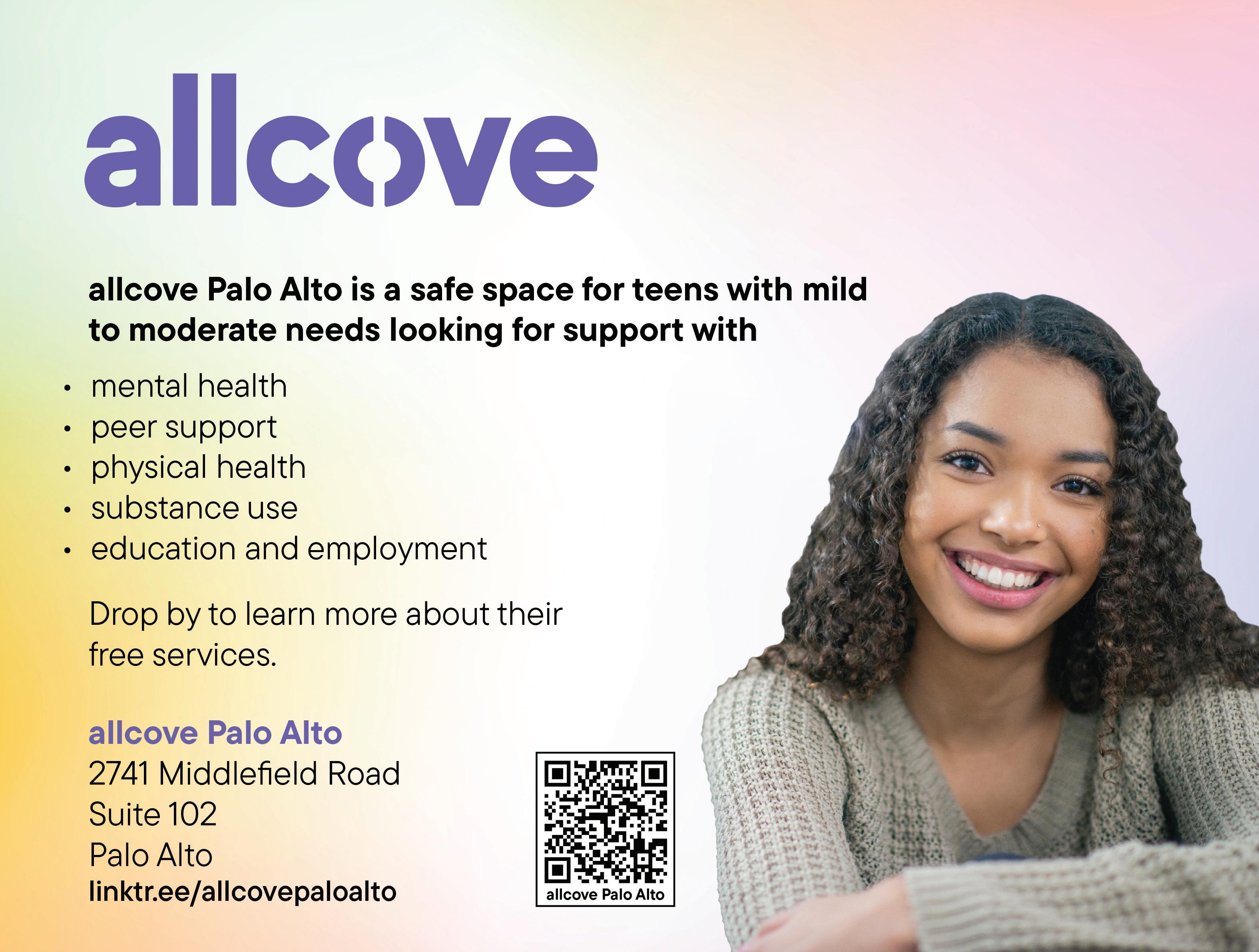

Claire Jittipun Features Editor
In a society obsessed with unrealistic and unhealthy body standards, diet culture thrives off of blind followers by promising quick fixes and idealized results. Disguised as a solution to body image issues, it pushes restrictive diets like keto, low-carb and fasting — all in the name of achieving a certain look. Because social media and societal pressures push beauty standards about how one’s body should look, it leads many to follow diets without proper research. Blindly adhering to diet culture without any investigation on true health benefits can be harmful, often resulting in disordered eating, mental health struggles and physical health risks.
Diet culture particularly targets vulnerable individuals, mainly those who feel desperate to fit into society’s narrow ideals of beauty. An article written by Global Girls Glow, a nonprofit girl mentorship organization, discusses how diet culture preys on people’s insecurities, pushing them toward fad diets as means to achieve the “perfect” body quickly. This pressure often leads individuals to follow diets that eliminate essential nutrients or require extreme calorie restrictions without understanding the long-term health risks. Desperation can cloud judgment, leading people to act impulsively in their quest for weight loss. An article by Carolyn Karoll from Psychology Today explains that diet culture fosters “a sense of urgency” to lose weight and achieve a particular body type. This mentality can lead people to act out of eagerness rather than making informed, health-based decisions. Many dieters don’t realize that these meal plans often overpromise and underdeliver, fueling a cycle of trying out a diet, not seeing results and eventually, frustration. According to Karol, this pattern, which can have harmful effects on both physical and mental health, is referred to as “yo-yo dieting.”
Diet culture thrives on creating insecurities and offering quick fixes to vulnerable individuals, particularly those who feel desperate to fit into society’s narrow ideals of beauty.
for people to become accustomed to a “perfect” body type that is advertised to them, and it’s only natural for them to want it, leading to a cycle of pursuing unrealistic body ideals. The National Eating Disorders Association claims that diet culture pressures individuals, especially women, to meet impossible body standards and results in widespread body dissatisfaction that begins as early as in childhood. NEDA reported in 2020 that by age six, 42% of girls already express a desire for a thinner body, an alarming statistic that highlights the pervasive influence of diet culture from a young age
When desperation results from blindly following diet culture, it can eventually severely impact mental health. A study conducted in 2021 by the International Food Information Council found that 40% of Americans had tried dieting during that year. Yet, many of them experienced worsened self-esteem and body image after the diet failed to produce the promised results. This cycle of dieting and failure is often a result of unrealistic expectations and promotes long-term psychological damage. For those desperate to conform to standards perpetuated by mass media, failure to achieve the desired outcome can create a sense of guilt and inadequacy.
“
NEDA reported in 2020 that by age six, 42% of girls already express a desire for a thinner body, an alarming statistic that underscores the pervasive influence of diet culture from a young age
Following trendy diets without health-focused research can also lead to serious consequences in physical health. Diets typically consist of restrictive eating habits and rules that aren’t specialized to treat anyone. Instead, it targets a nonspecific group of people, undermining its effectiveness. For example, one method of health practices might not work on one person as well as another, resulting in the rise of health issues such as nutrient deficiencies, metabolic damage and the loss of muscle mass. Another example is low-carb diets, such as keto and intermittent fasting, that can lead to short-term weight loss. In contrast, long-term fasting can slow down metabolism and encourage weight gain, as reported by NEDA in 2020. A study conducted in 2020 by NEDA highlighted that 95% of people who follow extreme diets will regain the weight they lost within one to five years, further proving the unsustainable nature of these quickfix solutions. Health consequences of following diets can also be extremely dangerous. A study conducted by Global Nutrition Report in 2018 shows that poor
the Regis University Highlander by Editor-in-Chief Austin Pierce explains this harmful occurrence through a pattern called the “bandwagon effect.” Pierce describes the bandwagon effect as a psychological phenomenon where people will do anything for the sake of keeping up with the current trend. This shows a negative impact on one’s mentality and overall well-being because their true needs are ignored in favor of following what appeals to a herd more.
Shifting from desperate dieting to a more informed health approach is a crucial step to escape the harmful impacts of diet culture. One option is to embrace intuitive eating, which promotes listening to the body’s innate hunger signals instead of adhering to strict diet regimes. The Windsor-Essex County Health Unit states that intuitive eating focuses on promoting a healthier connection with food and body image through prioritizing flexibility and balance, rather than strict regulations.
Another method is to adopt body neutrality, or valuing the body for how it serves us over how it looks. This attitude helps people steer clear of the pitfalls of society’s harsh standards of being thin. Global Girls Glow emphasizes that genuine wellness is not based on outward appearance but on a comprehensive view of health that values mental, emotional and physical wellbeing equally. The desire to fit in with society’s limited beauty norms can push individuals to unquestioningly embrace diet culture, enticing people with rapid results and drastic changes. Nevertheless, the cost of acting out of desperation can be high. Fad diets and strict eating habits target susceptible people, keeping them stuck in patterns of unhealthy eating, self-doubt and potential health issues in the long run. Despite the promise of quick outcomes, these diets do not provide long-term fixes and can actually exacerbate the problems they aim to address. Genuine health and wellness cannot be achieved through limitation, but instead by finding equilibrium and showing self-kindness.
Fad diets and strict eating habits target susceptible people, keeping them stuck in patterns of unhealthy eating, self-doubt and potential health issues in the long run.
By turning away from desperation-driven diets and adopting body neutrality, intuitive eating and selfacceptance, dieters can develop a better connection with food, their bodies and themselves. Changing one’s mentality helps break down the empty guarantees of diet lasting health over temporary physical standards. By recognizing and refusing to follow the negative aspects of diet culture, dieters can live authentically, liberated from the expectation to fit in and accept themselves both
